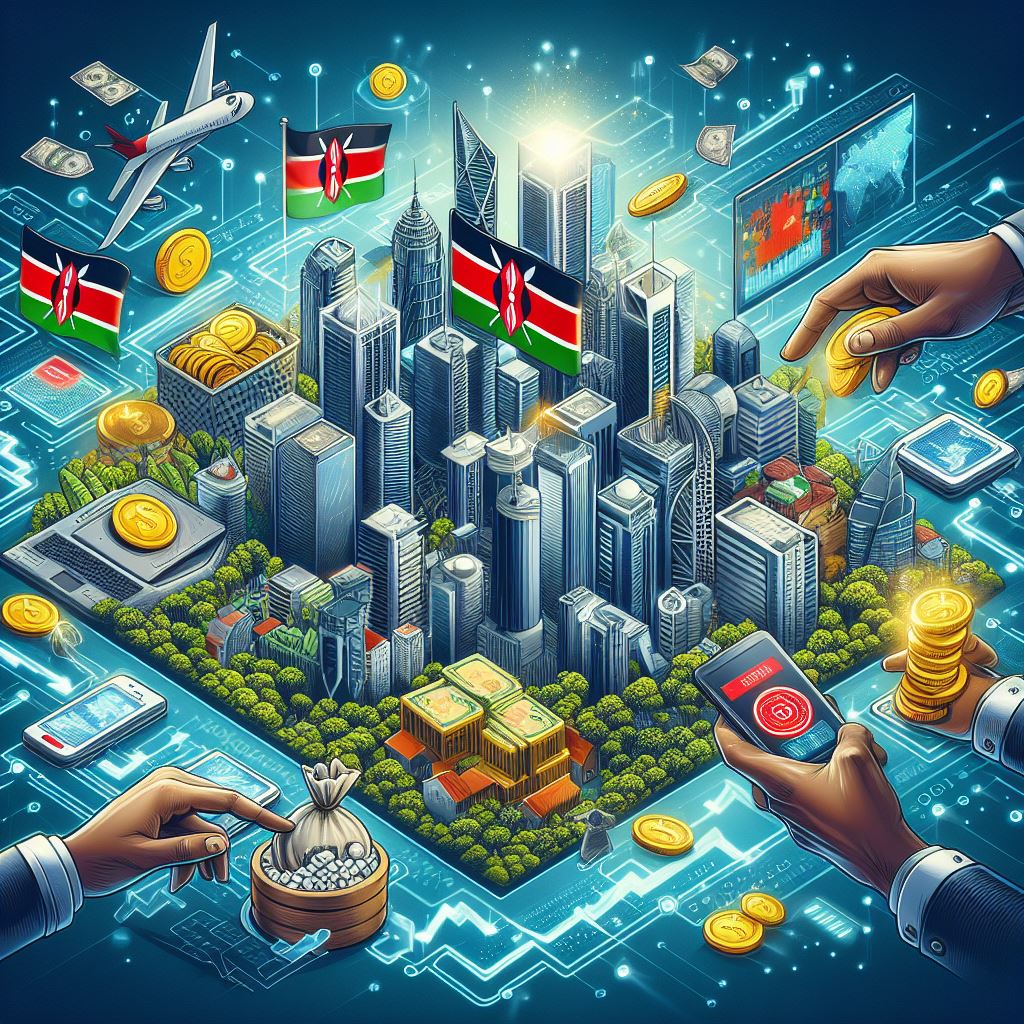Satellite internet brings global connection to people; it connects individuals to basic amenities such as education and healthcare. Though it has issues such as high cost and latency, development make it an important instrument for bridging the digital gap.
The Role of Satellite Internet in Providing Global Connectivity
Introduction
As we move towards the years with the internet almost playing almost all the aspects of our daily life including education, health, commerce, social, and so on. However, there is still a huge chasm between the cyber-connected and the cyber-disconnected, with millions having no steady Internet or, at best, minimal access especially in the developing world and in the rural zones. Conventional new connection methods which basically include fiber optics cables and cell towers are somewhat restricted in extending to hard terrains and low-density regions. Satellite internet however is still in its young age and provides an opportunity of faster Internet connection with little or no need for ground facilities. In this article, the author analyses the potential of satellite internet for changing global connection, its benefits, and the drawbacks for society and global development.
The Limitations of Traditional Internet Infrastructure
For many years, internet infrastructure has used facilities such as fiber optics and cell towers that are well effective on areas with high density. But extending these networks to rural, remote or high-altitude terrain is expensive, takes time and it is usually not feasible. Connecting people in small villages via fiber-optic cables through mountains, deserts or across seas is a very expensive service and the costs double to maintain these connections in such conditions. Like any other equipment that forms communication networks, cellular towers rely on the existing grid connection and regular service. The reasons are that a significant portion of zones has no connection or only has intermittent access, which keeps the gap between cities and other regions that satellite internet connects.
How Satellite Internet Works
Satellite internet operates by communicating data between satellite stations on the Earth’s surface and satellites orbiting around the globe with the utilization of other satellite dishes on the ground. There are two primary types of satellite orbits utilized in delivering internet services: GEO – Geostationary orbit and LEO – Low Earth orbit. GEO satellites are positioned at a height of about 36000/thousands of km and always appear at the same location in the sky in order to provide continuous coverage of large geographical portions at stable intervals. While GPS satellites orbit at the tremendous height of nearly 20,200 kilometers above the surface, LEO satellites operate at much lower heights of 500-2000 kilometers. LEO satellites orbit the Earth at a comparatively higher speed, and because of small distance, they offer low latency, which is a significant parameter for applications which necessitate the prompt exchange of data, such as online gaming or video conferencing. SpaceX, with its project Starlin, and Amazon with the Kuiper project, already using LEO constellations, place hundreds or thousands of satellites into orbit to create a network that can provide stable and faster internet connection with lower latency.
Advantages of Satellite Internet for Expanding Connectivity
But, by far one of the biggest benefits of satellite internet is that it can reach almost any location on the planet This is why satellite internet is perfect for populating areas that might be considered off the beaten path such as islands, communities, and other regions that are not easily connected to the internet. This extensive coverage capability makes satellite internet to bring on-line accessibility of the internet to regions where installing wired or wireless networks is either impossible or very expensive to achieve. As satellite internet connects these overlooked areas to the World Wide Web, it gives a shot at education, health, and economy. Moreover, the satellite internet may be deployed flexibly. Unlike the ground infrastructure that needs to be built and laid out, satellite technology can be activated as soon as ground equipment is installed and this can be incredibly beneficial during disasters where the physical infrastructure is impaired.
Satellite Internet’s Role in Bridging the Digital Divide
The digital divide is a long-standing problem of global proportions; hundreds of millions of people experience cue, or limited, access to pixilated Internet connections, which finally impedes their equity in education, health care, and employment markets. Satellite internet provides an incredible chance to overcome this gap with the help of providing voice and other communication services together with high-speed internet connection to areas which were not served at all or had very poor service offered before. For example, students in remote fields can be able to attend information technology-based education and information systems that they could not get access to before. Satellite internet helps you provide telemedicine services to the residents of rural areas, so they can afford to consult with specialists without distant travel. In this way, satellite internet enables people to engage in digital and economic activities, to freely access services they need to enhance the quality of their lives, in existing at distant locations.
The Economic Impact of Satellite Internet
Satellite internet can greatly increase economic growth in regions where other types of Internet connection are unavailable. High-speed internet connectivity is necessary for firms as they are an essential marketing tool for expanding market share, efficiency, and consumption by consumer. According to the idea, for small and middle-market firms in developing countries satellite internet service presents the ability to penetrate world markets and consequently become more competitive. Furthermore, satellite internet could pull new types of businesses to areas that previously lacked them: information technology, digital finance and e-commerce, to name a few, generating employment and encouraging economic growth. Governments in the developing countries have come to regard satellite internet as a very useful tool if productivity is to be raised and their competitiveness on the world market structure improved.
Challenges of Satellite Internet
Thus satellite internet has enormous potential but in the same time has several issues that can led to effectiveness and scalability problems. The first one is latency, and above all, for GEO satellites, latency is inherent due to a considerable distance to cover by the transmitted data. Tall inactivity is troublesome to exercises that require moo idleness such as video conferencing and online gaming. LEO satellites decrease this issue since they are near to the Earth's surface, but they have a gigantic number of satellites required to construct groups of stars to cover the globe, which is expensive and challenging to realize. Satellite internet services are expensive, thus another complication the solution has to address. Satellite internet, however, can be expensive in that equipment and subscription costs can be significantly high especially for the users in low-income area. Most commonly, signal quality may be disrupted by weather conditions, including heavy rain or snow, however satellite technology is expanding to counter these forms of signal disruption. Also, a larger number of satellites present in the orbit leads to Space debris, which is dangerous to satellites and Spacecraft, hence have debates about sustainable methods of satellite deployment.
Advancements in Satellite Technology
Some of these challenges, however, are being tackled by new innovations in satellite technology in the provision of satellite internet. New players of SpaceX, Amazon, One Web and others are developing and launching new generations of LEO satellite networks that are able to offer improved speed, low latency and high reliability. Such advances are expected to lower costs in the long run to support satellite internet affordability among widely diverse users. Satellite design and deployment also tries to overcome difficulties in the use of satellites for education by covering losses due to bad weather cases as well as improving the signal intensity. Further, AI and machine learning are also applied for betterment of satellite networks that would allow improving its functioning and decreasing expenses. Since development of satellite is becoming advance in near future satellite internet is having the high chances to become competitive and reliable for world connectivity.
Environmental and Regulatory Considerations
Satellite constellation deployment has progressed at an alarming rate in recent years, and the increasing problem of space debris is one of the most pressing sustainability concerns. Since there are more satellites entering LOW the prospects for collision increases meaning that debris produced causes danger on other satellites and spacecrafts. Despite the looming dangers of debris, concern from large satellite constellations is following measures to mitigate the effects including decommissioning satellites once they have served their useful years. Global best practices are also being established in relation to space traffic management in the efficient and sustainable utilization of space assets. In addition, as with each new satellite station, the problem of spectrum distribution and frequency regulation becomes acute. Currently the governments and the international organizations are in the process of establishing rules for equal and reasonable access to orbital space with no negative impact on safe functioning of satellites.
Satellite Internet in Disaster Response and Humanitarian Efforts
Satellite Internet services are paramount in disaster response and humanitarian requirements mainly due to Internet connection. In case of disaster like hurricane, earthquake or fire, normal network systems of communication are generally inaccessible and the stranded communities are unable to communicate with fellow beings or the rescue party. Satellite internet can prompt communication in these regions and make coordinated responses to emergency situations possible within several hours. For example, United Nations and several Non-governmental organizations (INGO) uses satellite internet to provide support and interact with affected communities. In light of this, satellite internet is a lifesaver, enabling recovery operations, and guaranteeing that afflicted communities obtain the assistance they require when they most need it.
The Future of Satellite Internet
With populations around the world becoming more connected in a globalized economy, satellite internet is seen penciled to take on this handling role. Advances in the satellite technology like re usability rockets plus mini satellites that are used increasing the density of the satellite networks make it plausible to run the satellite corporations at cheap. It could also be expected that satellites will provide cheaper access to the Internet for even more people to have the access to the world wide web. Governments and companies are also considering mergers where satellite internet is further taken and connected to current networks. At some point in the future, satellite internet can be utilized as a backup to ground based networks so all corners of the Earth can get on the web. Here are some considerations in its future, and it is apparent that satellite Internet services could have potential when developed and advanced to be a part of the growth toward a more connected society for everyone.
Conclusion
Partisan web is revolutionizing worldwide network, advertising a practical arrangement for coming to ranges that conventional foundation cannot effectively serve. By bridging the computerized partition, fawning web has the potential to convert communities by giving get to to basic assets like instruction, healthcare, and financial openings. Whereas challenges such as inactivity, fetched, and natural concerns stay, mechanical progressions are making adj. web more attainable and successful. The part of disciple web in catastrophe reaction, financial development, and social improvement highlights its importance in today's interconnected world. As toady innovation proceeds to advance and administrative systems advance, obsequious web will get to be a progressively crucial apparatus for accomplishing all-inclusive network. In a world where advanced get to is getting to be an essential right, adherent web speaks to a basic step toward guaranteeing that no one is cleared out behind within the travel toward worldwide network.


























